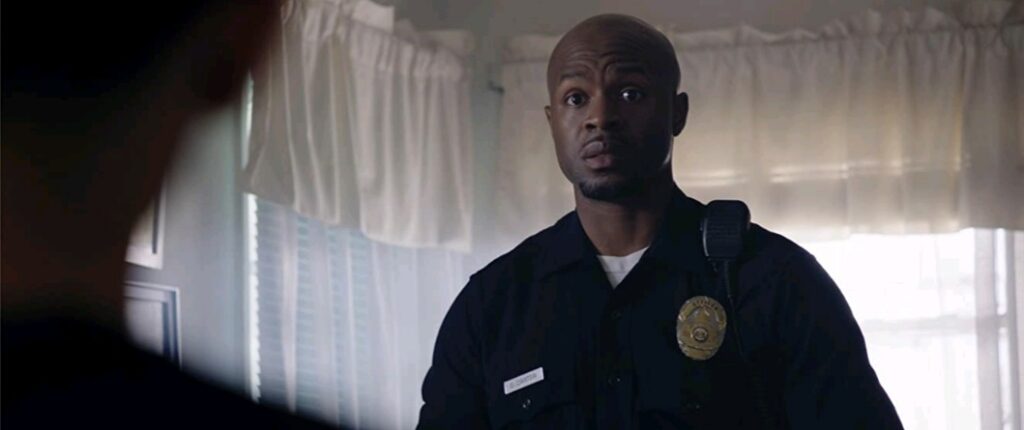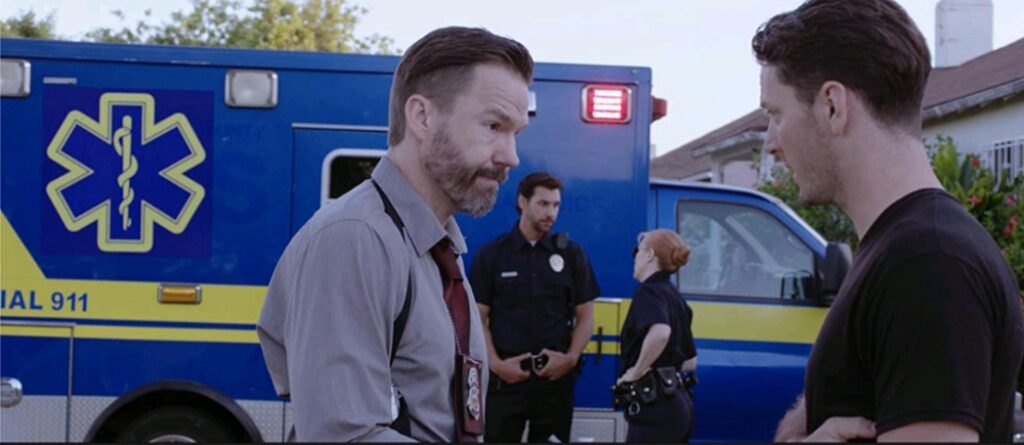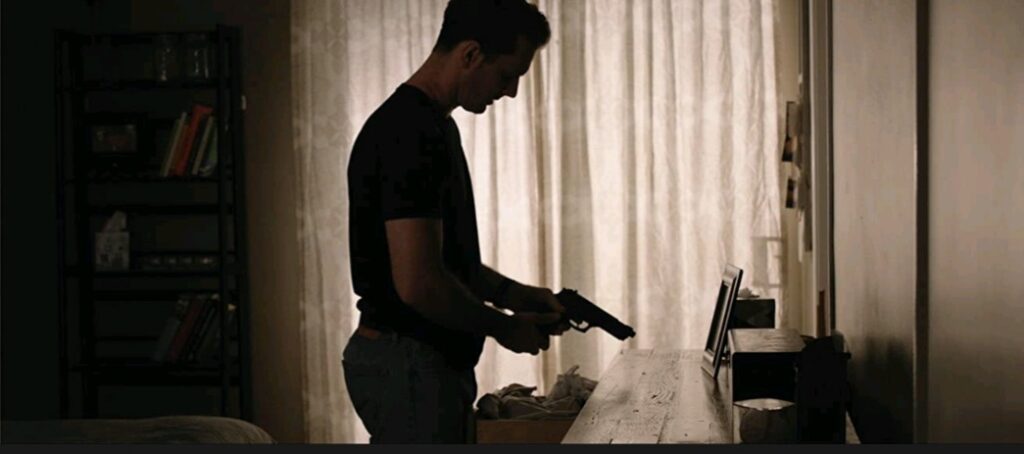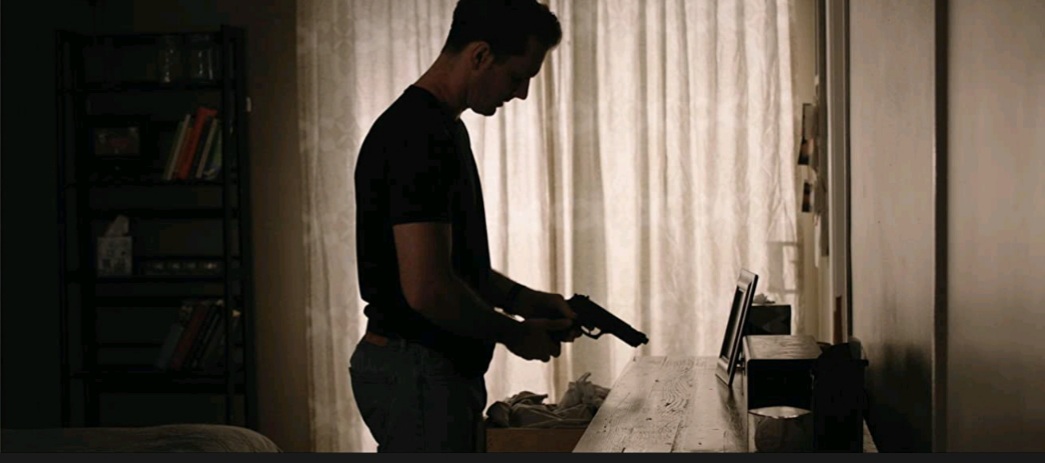Written and directed by Jason Snellman, this short film explores the many complexities of responsibility, justice, and morality that America’s police force often face as a result of carrying a badge.
A Blue Shroud opens on a dark and ominous visual: with nothing but the heavy breathing and desperate pleading of an unseen victim playing out over the soundscape, viewers are immediately met with the heightened sense of suspense that will carry us through the following 28 minutes of the film.

The victim’s face is revealed shortly after a brief struggle with his unknown attacker, which lands him straight into a deep blue body of water. As the moonlight filters through the dark waters and reflects off of his sinking physique, we see Adam Hoffman (Brandon Alan Smith) for the first time, hands bound by rope, struggling to make his way to the surface.
After the title card dissipates, Hoffman has made his way to land, struggling to regain his strength after the attempt on his life. From here, we are brought to the interior of a police department–Hoffman’s place of work–where we meet our other main characters: Officer David Carter (Telvin Griffin), Officer Jacobs (Shelly Snellman), and Captain Dennis Carter (Nathan Marlow).
David Carter is known throughout the office as Hoffman’s partner on the force, and also as one of his close friends. Through hushed conversations with an array of side characters, we come to learn that the events leading up to Hoffman’s attack coincided with a night of drinks and celebrations, a warm welcome back to the force after completing his mandatory suspension for a certain display of behavior. David Carter, son of the Captain, seems to maintain a sense of pause and reservation toward his previously suspended partner, as well as the other officers on the force.

Soon, Hoffman reveals his whereabouts to Carter through a heated phone call. During this heightened discussion, Hoffman claims that he knows who attempted to kill him and plans to set things straight on his own, causing Carter to stress. In a desperate attempt to relieve the situation, Carter offers to meet Hoffman where he’s at, causing them both to arrive at the home of Hoffman’s alleged attacker.
As the following events unfold, audiences witness a conversation between the two that explores the differences between “right” and “wrong, “justice” and “duty”, and “responsibility” and “morality.” Through this exchange of words, audiences are presented with an array of themes that coincide with our current political state, including conversations around the Black Lives Matter movement, the honor of the badge, and an officer’s obligation to keeping communities safe.
The themes in Snellman’s work are undoubtedly important (and hard) ones to explore, yet A Blue Shroud does a great job of navigating opposing perspectives in a way that poses questions – both for the characters within the narrative and the viewers that watch it from afar.

The performances of Telvin Griffin and Brandon Alan Smith are notable, too: their passion and persuasion felt incredibly real and sincere, and both produced a believable portrayal of the characters they embodied. With tearful eyes and cheeks flushed with anger, these actors committed 110% to their performances, and it definitely paid off.
The production value of this film was surprisingly immaculate. You can tell how much attention went into the details of the framing and color of each scene, and its stylized visuals definitely brought the viewer into the narrative in a way that might not have been possible with its absence.
In all, the film did a wonderful job of exploring a narrative experience that has been long overlooked in our society. While some elements of the film could use a bit of tweaking (like tightening up the pace and losing a few lines of dialogue that were a bit on the nose), the film can definitely be applauded for its efforts and accomplishments, and if nothing less, for its courage in taking on a subject that is hard to articulate in any given forum.


